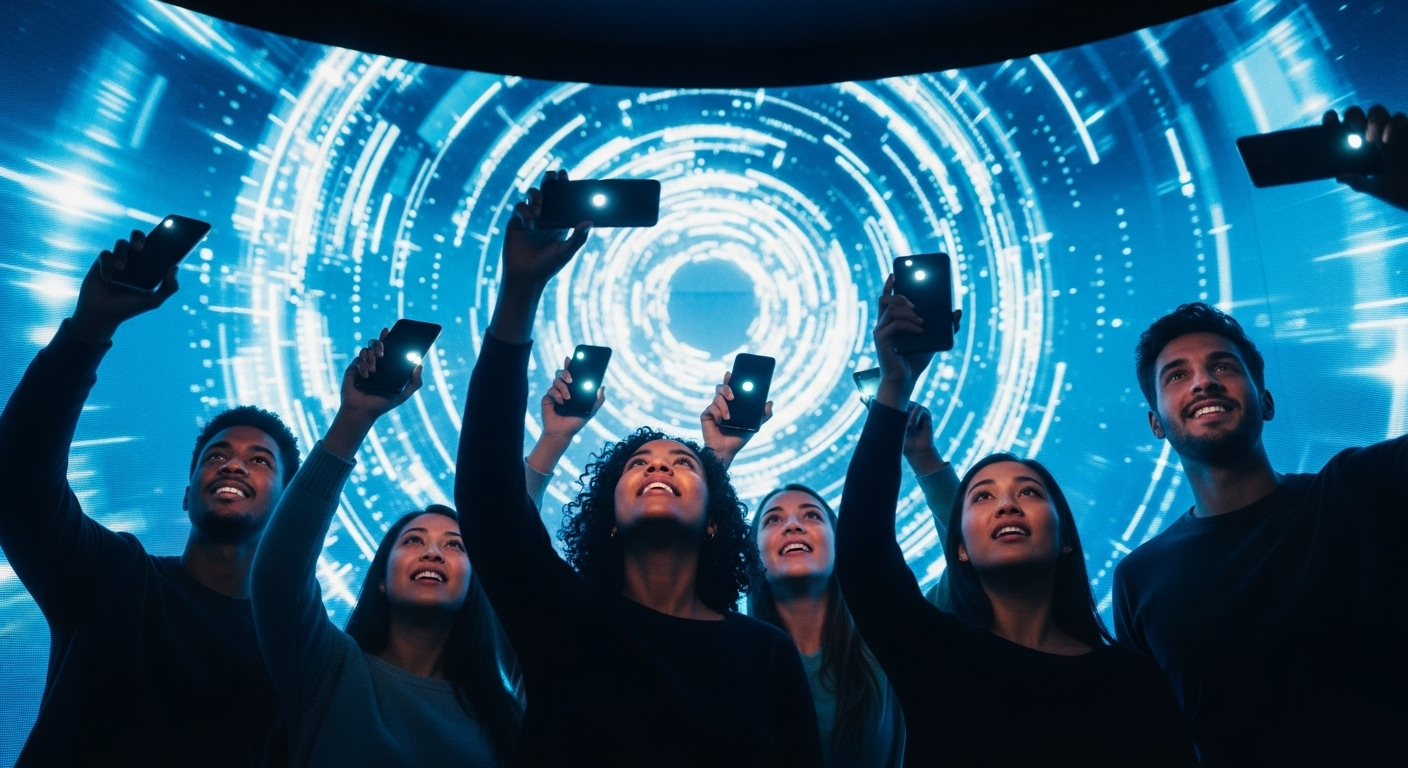Collective Effervescence in the Digital Age
Societal bonds are evolving in unprecedented ways as our world becomes increasingly connected through technology. This transformation is giving rise to a new form of collective effervescence - the shared emotional excitement that emerges from group gatherings and rituals. How is this phenomenon manifesting in our digital landscape? What implications does it hold for our sense of community and belonging?

Traditionally, collective effervescence was associated with physical gatherings such as religious ceremonies, festivals, and sporting events. These occasions allowed people to synchronize their actions, emotions, and attention, creating a powerful sense of unity and shared purpose. The result was a temporary dissolution of individual boundaries and the emergence of a collective consciousness.
Digital Platforms as Modern Ritual Spaces
In the 21st century, digital platforms have emerged as new spaces for collective experiences. Social media, online gaming, live streaming, and virtual reality environments now serve as virtual gathering places where millions of people can simultaneously engage in shared activities and conversations. These digital spaces have become modern ritual grounds, capable of generating collective effervescence on a global scale.
Consider the phenomenon of viral social media challenges or hashtag movements. When millions of people participate in these trends, they experience a sense of connection and shared purpose that transcends geographical boundaries. The act of creating, sharing, and engaging with content around a common theme creates a digital version of the synchronization that Durkheim observed in physical gatherings.
The Amplification Effect of Digital Collective Effervescence
One of the most significant aspects of digital collective effervescence is its potential for rapid amplification. In the physical world, the spread of collective excitement is limited by physical proximity and the speed of information transmission. In the digital realm, however, emotions and ideas can spread globally within minutes.
This amplification effect has profound implications for social movements, cultural trends, and even political discourse. The Arab Spring, for instance, demonstrated how digital platforms could facilitate the rapid spread of revolutionary fervor across entire regions. Similarly, global movements like #MeToo or climate activism have leveraged digital collective effervescence to create widespread awareness and mobilize millions of people around shared causes.
Challenges and Criticisms of Digital Effervescence
While digital collective effervescence offers new opportunities for connection and social cohesion, it also presents unique challenges. Critics argue that digital experiences lack the depth and authenticity of physical gatherings, potentially leading to shallow or fleeting connections. There are concerns that the ease of digital participation might lead to slacktivism, where individuals engage in low-effort actions online without meaningful real-world impact.
Moreover, the algorithmic nature of many digital platforms can create echo chambers, where individuals are primarily exposed to like-minded others. This can lead to a fragmented form of collective effervescence, where different groups experience intense but isolated pockets of shared excitement, potentially exacerbating societal divisions.
The Future of Collective Effervescence
As technology continues to evolve, the nature of collective effervescence is likely to transform further. Emerging technologies like augmented reality and haptic feedback systems promise to blur the lines between physical and digital experiences, potentially creating more immersive and emotionally resonant forms of digital gathering.
Researchers are also exploring ways to harness the power of digital collective effervescence for positive social outcomes. For instance, some studies suggest that carefully designed digital interventions could promote prosocial behavior, enhance empathy, and foster a sense of global citizenship.
As we navigate this new landscape, it is crucial to strike a balance between embracing the connective potential of digital platforms and preserving the depth and authenticity of human interactions. The challenge lies in creating digital spaces that can generate genuine collective effervescence while also encouraging meaningful offline engagement and social cohesion.
In conclusion, the concept of collective effervescence, born in the study of traditional societies, has found new relevance in our digital age. As we continue to explore and shape these virtual realms of shared experience, we have the opportunity to reimagine the ways we build community, foster belonging, and create collective meaning in an increasingly interconnected world.





